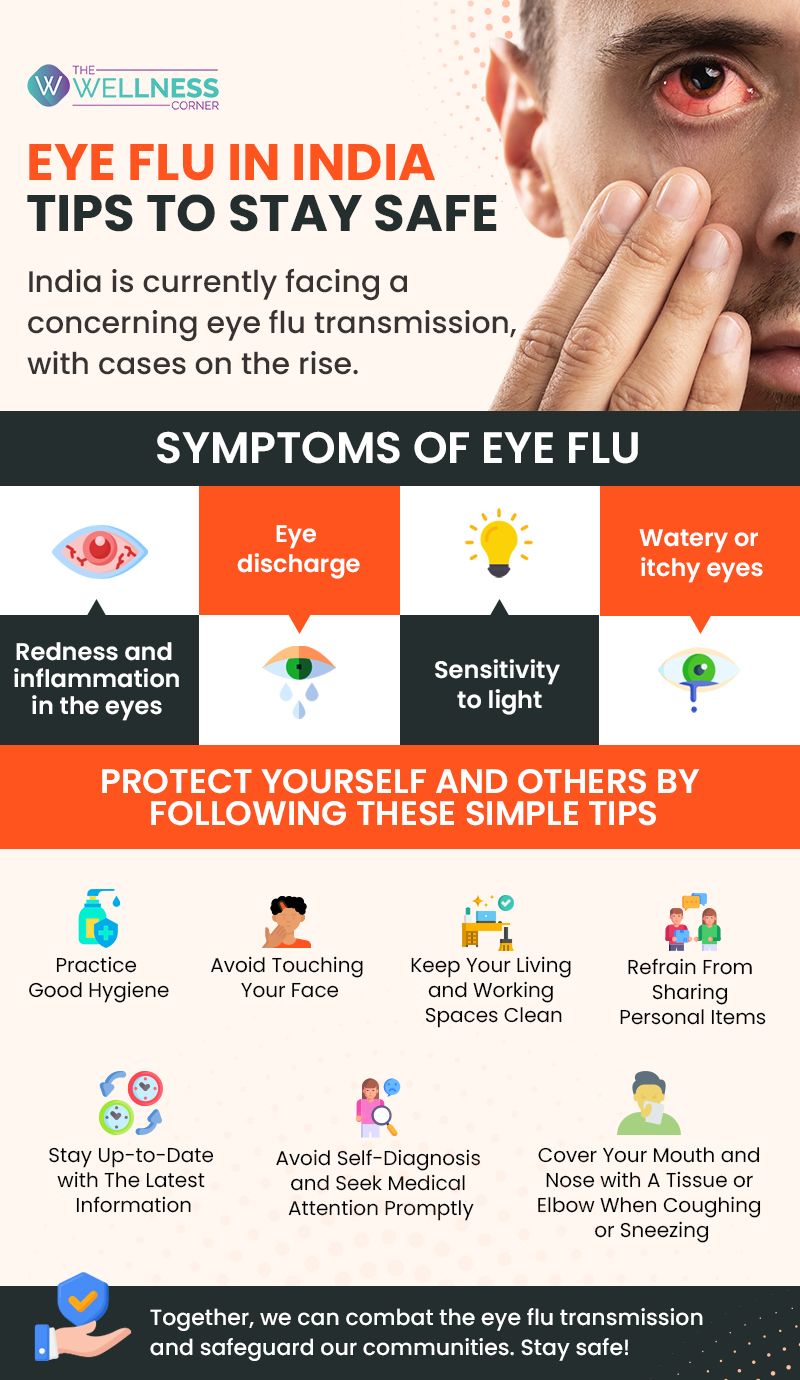Got Itchy Red Eyes? It May Be Eye Flu!
- 20 months ago
In recent months, India has been grappling with a concerning transmission of eye flu, causing widespread health concerns across the nation.
The eye flu, also known as conjunctivitis, is an infectious condition that affects the eye's outermost layer and the eyelids' inner surface. With its highly contagious nature, the outbreak has raised alarm bells among health authorities, prompting rapid responses to mitigate its spread.
In this blog, we will delve into the current situation of India's eye flu transmission, understand its causes, and explore the measures being taken to control and prevent further escalation.

Symptoms of Eye Flu
- Redness and inflammation in the eyes
- Watery or itchy eyes
- Eye discharge
- Sensitivity to light
Also Read: Having Frequent Headaches- A Sign Of Eye Disorder??
The Current Situation
The most affected regions are urban centers and densely populated areas, where the virus can easily spread through close contact and contaminated surfaces.
Causes and Transmission
The eye flu transmission in India can be attributed to a combination of factors. Poor hygiene practices, such as not washing hands regularly or touching the face without sanitizing hands, can facilitate the spread of the virus. Additionally, the virus can spread through the use of contaminated towels, pillows, or eye makeup products.
Furthermore, India's tropical climate creates a conducive environment for the virus to thrive, especially during the monsoon season when humidity levels are high.
Also Read: 5 Ways to Keep Your Eyes Healthy
Government Response and Healthcare Measures
Recognizing the severity of the situation, the Indian government and public health authorities have been actively working to contain the outbreak and minimize its impact on the population. Some of the key measures taken include:
- Public Awareness Campaigns: The government has launched extensive awareness campaigns through various media channels, stressing the importance of hand hygiene, avoiding touching the face, and maintaining clean surroundings.
- Medical Camps and Facilities: Temporary medical camps have been set up in the most affected areas to provide timely diagnosis and treatment to patients. Additionally, hospitals and eye care centers are working tirelessly to manage the increasing number of cases.
- Contact Tracing and Surveillance: Health officials are conducting contact tracing of infected individuals to identify potential clusters and prevent further spread. Surveillance measures have been enhanced to monitor the outbreak's progression.
- School and Workplace Interventions: Schools and workplaces have implemented preventive measures, including mandatory handwashing, sanitization, and the use of masks to reduce the risk of transmission.
- Medical Research and Collaboration: The government is actively collaborating with research institutions and international health organizations to study the virus.
Individual Responsibilities
While the government is taking proactive steps to control the outbreak, individual responsibility plays a crucial role in curbing the spread of eye flu.
Take the following actions:
- Adhere to Hygiene Protocols: Practicing good hygiene is essential in preventing the transmission of the eye flu virus. Wash your hands frequently with soap and water for at least 20 seconds, especially after coming into contact with commonly touched surfaces or interacting with someone who might be infected. If soap and water are not available, use alcohol-based hand sanitizers with at least 60% alcohol content.
- Avoid Touching Your Face: The eyes, nose, and mouth are potential entry points for the virus into the body. Refrain from touching your face, especially with unwashed hands, as this can introduce the virus into your system.
- Use Personal Protective Equipment (PPE): In situations where maintaining physical distance is challenging, such as in crowded public spaces or while using public transportation, consider wearing a mask to reduce the risk
- Practice Respiratory Etiquette: Cover your mouth and nose with a tissue or elbow when coughing or sneezing, and dispose of used tissues immediately. Wash your hands afterward to prevent the spread of respiratory droplets containing viruses.
- Maintain Clean Surroundings: Keep your living and working spaces clean and sanitized. Regularly disinfect frequently touched surfaces such as doorknobs, light switches, and shared electronics.
- Avoid Sharing Personal Items: Refrain from sharing personal items, such as towels, handkerchiefs, or eye makeup products, to minimize the risk of cross-contamination.
- Seek Medical Attention Early: If you experience symptoms such as redness, itching, tearing, or a discharge from the eyes, seek medical attention promptly. Avoid self-diagnosis and follow the guidance of healthcare professionals for proper diagnosis and treatment.
- Stay Informed: Stay up-to-date with the latest information and guidelines issued by the government and health authorities.
By following these responsibilities and guidelines, you contribute not only to your safety but also to the safety and well-being of your community.
You May Also Check:









